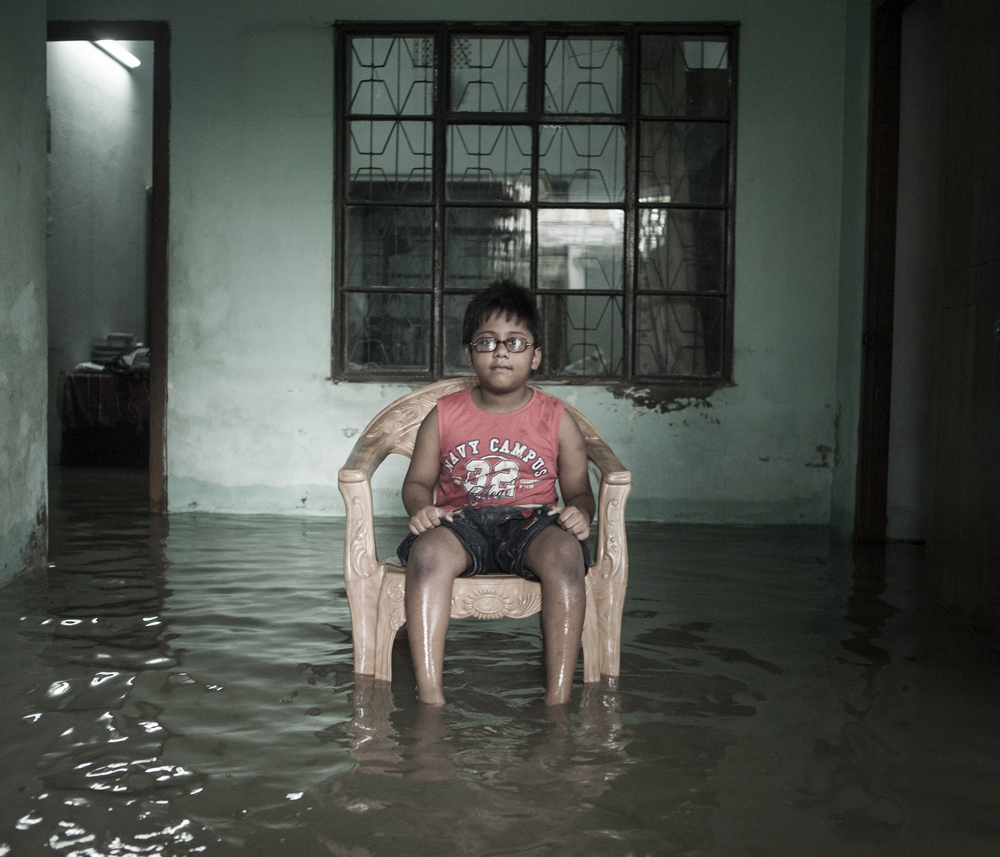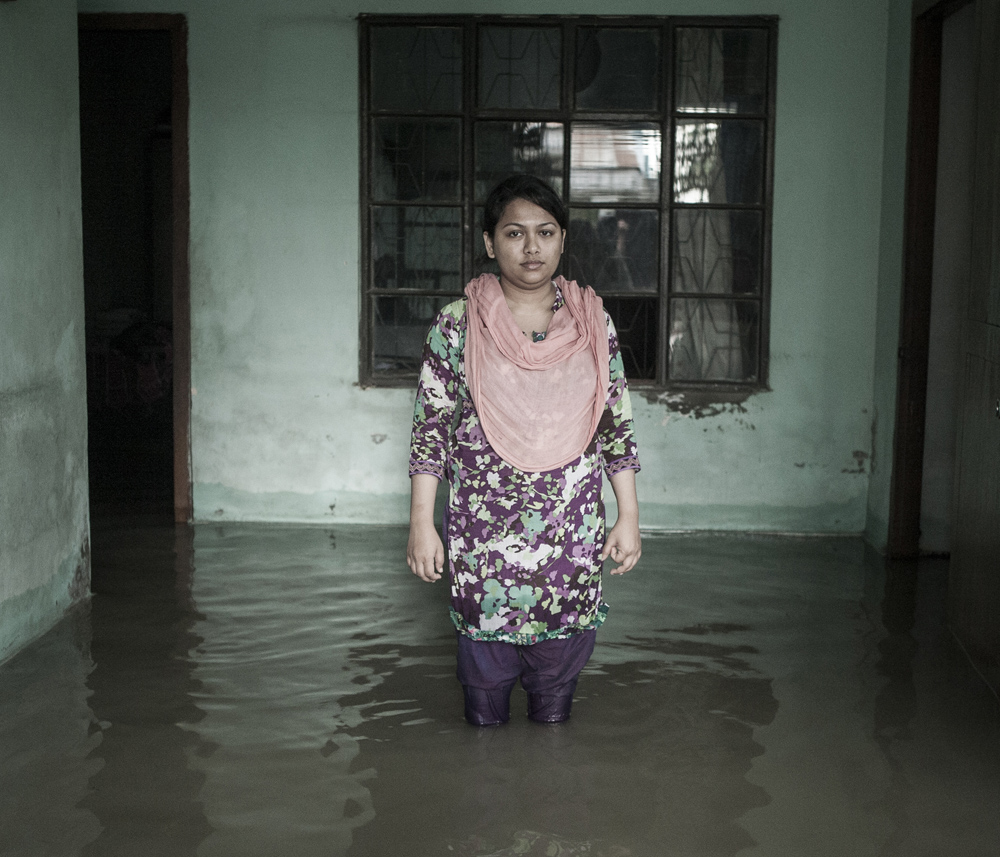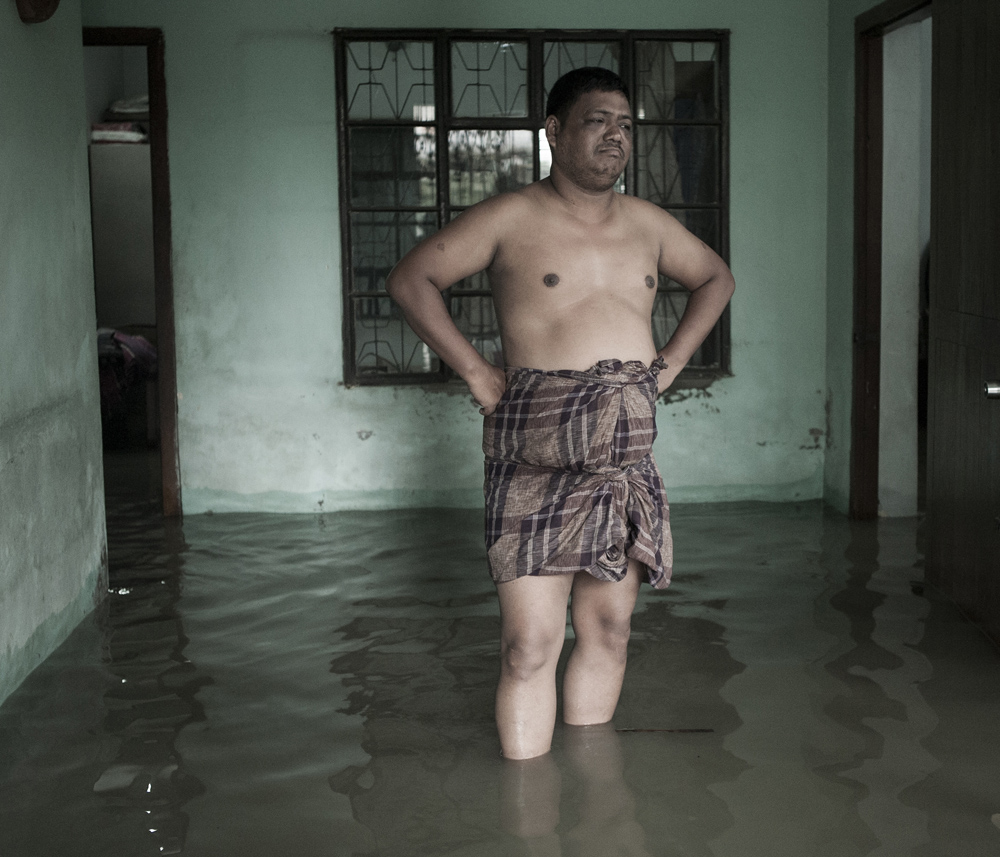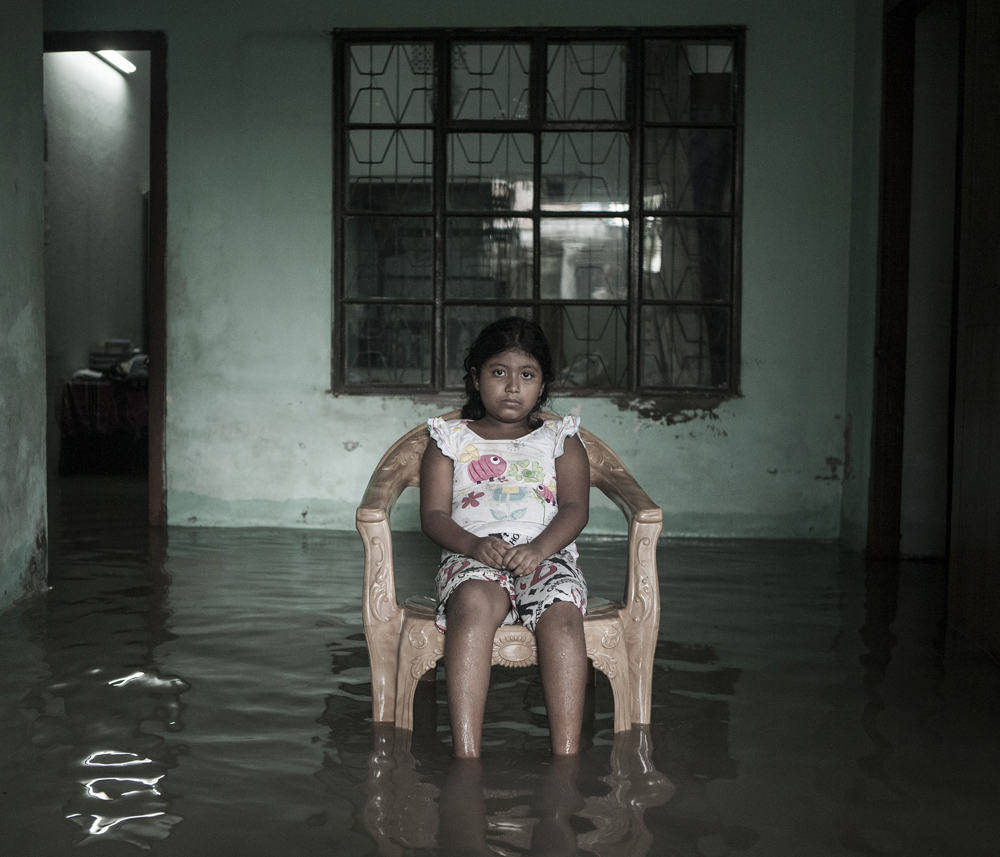Water World
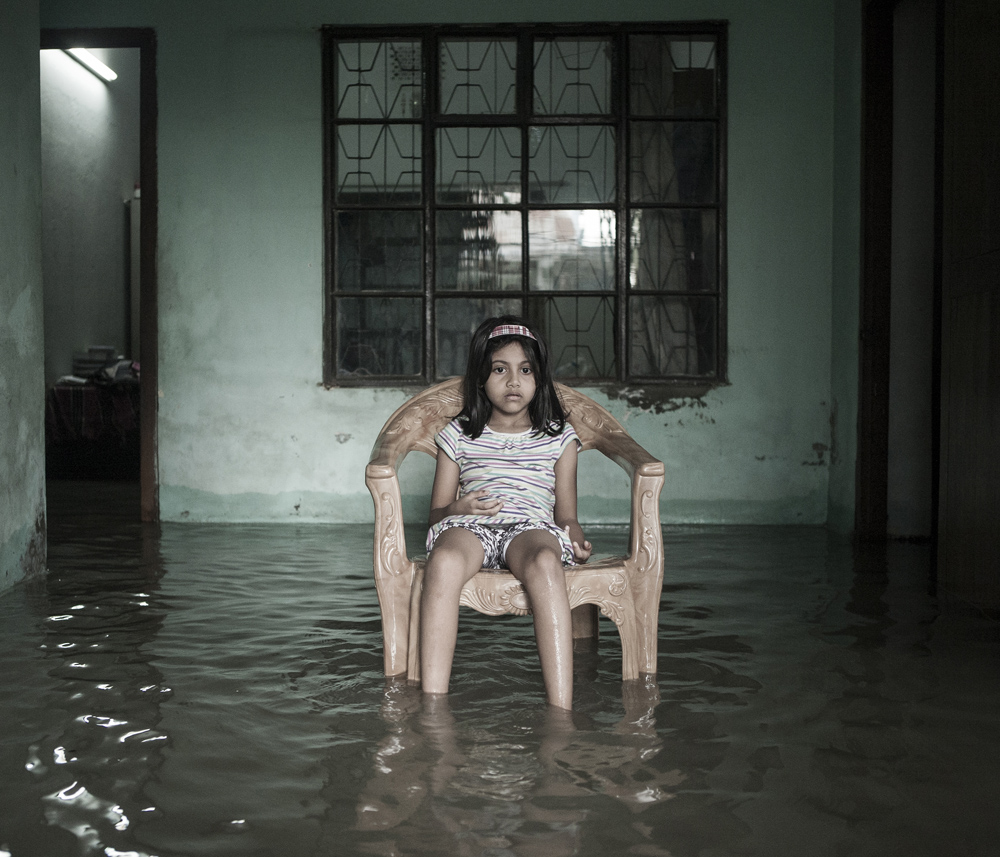
-
PhotographerJashim Salam
-
PrizesSilver in Editorial/Environmental
WATER WORLD by Jashim Salam My family and me are greatly affected by the tidal flood from last several years regularly. Our lush green home yard at Chaktai, which is situated in the heart of the city of Chittagong goes under tidal water often these days.We had to raise it up with concrete floor more than 2 feet as a protection from tidal water. Ground floor of my house also had to raise higher to save household stuffs from water. If the sea level keeps increasing, I could lose my roots. With all my childhood memories along with my photographs, I am portraying a city that I am deeply connected with – and the suffering that experienced along with its inhabitants. The effects of climate change – rising sea level and sea surface temperature, emission of carbon by first world country, deforestation, global warming – have brought a sudden vulnerability to the lives and livelihoods of people living in Chittagong city and coastal areas of Bangladesh. The most heavily effected places are heart of Chittagong city, like Chaktai, Khatunganj, Bakolia, and Agrabad. If things continue to worsen, the business hubs of Chaktai and Khatunganj could become submerged in near future. Chittagong is often regarded as the commercial and industrial capital of Bangladesh. Estimated population of the city is more than 6.5 million and it is considered the second largest city in the country. The Port of Chittagong is an important driver of the Bangladeshi economy, handling over 90% of the country's international trade. The millions of people living in these areas have to battle tidal flood sometimes twice a day. Prior to this sudden regularity, the only tidal surge in remembered history occurred during 1991, when a hurricane hit the coastal area of Chittagong. The new, frequent floods are quite alarming they rise even higher than before and continue to stay for days, causing great disquiet for the inhabitants. Locals such as myself are growing increasingly concerned, as we all may have to shift from our original localities due to this excess of water. My ongoing project “Water World†seeks to bring these issues to light. According to IPCC FAQ 5.1 There is strong evidence that global sea level gradually rose in the 20th century and is projected to rise at an even greater rate in this century. The two major causes of global sea level rise are thermal expansion of the oceans (water expands as it warms) and the loss of land-based ice due to increased melting. The instrumental record of modern sea level change shows evidence for onset of sea level rise during the 19th century. Estimates for the 20th century show that global average sea level rose at a rate of about 1.7 mm yr–1. Global sea level is projected to rise during the 21st century at a greater rate than during 1961 to 2003. Under the IPCC Special Report on Emission Scenarios (SRES) A1B scenario by the mid 2090s, for instance, global sea level reaches 0.22 to 0.44 m above 1990 levels, and is rising at about 4 mm yr–1. As in the past, sea level change in the future will not be geographically uniform, with regional sea level change varying within about ±0.15 m of the mean in a typical model projection. Thermal expansion is projected to contribute more than half of the average rise, but land ice will lose mass increasingly rapidly as the century progresses. The daily star published on June 20,2013,The Postdam Institute for Climate Impact Reaserch and Climate Analytics prepared a scientific report for the world bank that was released June 19,2013 forecasts a two degrees Celsius rise in the world’s average temperature in the next decades. Considering the present warming trends, the reports warns that even 20 to 30 years from now shifting rain patterns could leave some areas of the country under water and some others without enough water for power generation, irrigation or even drinking. Flood affected areas could increase by as much as 29 percent for a 2.5 degrees Celsius temperature rise in Bangladesh, says the report. If the sea level rises 65 cm in 2080,around 40 percent arable land will be lost in southern Bangladesh, it notes about 20 million people in the coastal areas are affected by salinity in drinking water and rising sea levels, This is a very personal ongoing project as the tidal flood affects my family and my home regularly.
